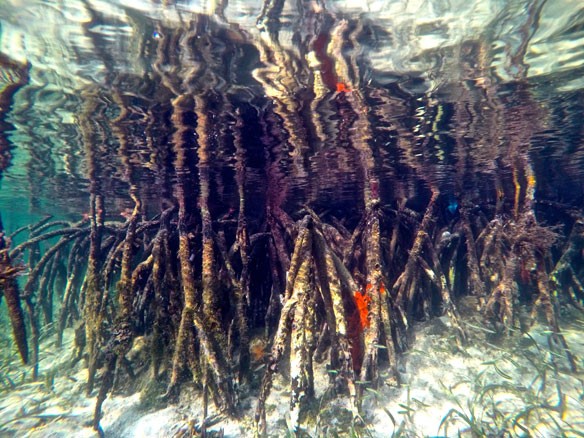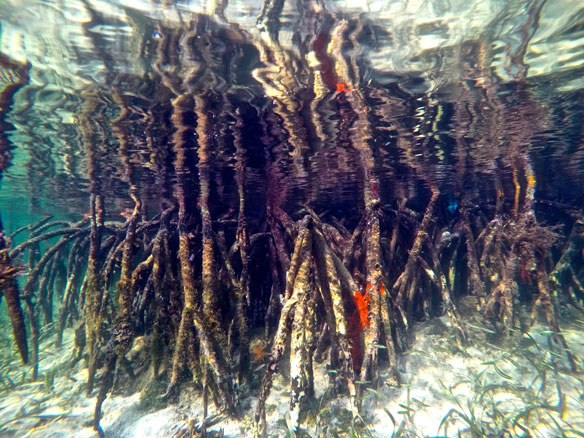
Mangrove roots. Photograph: © SAF — Coastal Care.
Mangroves are coastal tropical forests inhabiting the zone between the land and sea, made up of uniquely adapted, saltwater-tolerant tree and shrub species.They provide essential support to healthy marine ecosystems by trapping sediments and providing nutrients to nearby coastal seagrass beds and coral reefs.
Excerpts;
Experts have been focusing on hundreds of kilometres of mangroves along the coast of Karumba in Queensland’s Gulf Country and at Limmen Bight in the Northern Territory that have turned a ghostly white.
Serious concerns about the situation, which is compared to coral bleaching happening on the Great Barrier Reef, which is the result of warmer ocean temperatures, are raised…
Read Full Article, ABC News Australia
Coral bleaching hits 93% of Great Barrier Reef, Video, Science Daily (04-21-2016)
Australia’s Great Barrier Reef is suffering its worst coral bleaching in recorded history with 93 percent of the World Heritage site affected, scientists say as they reveal the phenomenon is also hitting the other side of the country…
Destruction of Mangroves Costs up to US$42 billion in Economic Damages Annually – UNEP Report (10-14-2014)
The world is losing its mangroves at a faster rate than global deforestation, the United Nations revealed, in a new report “Importance of Mangroves: A Call to Action,” adding that the destruction of the coastal habitats was costing billions in economic damages and impacting millions of lives…
The World Must Invest In Mangroves, The Ecologist (04-11-2014)
Mangrove Forests as Incredible Carbon Stores, The Nature Conservancy









